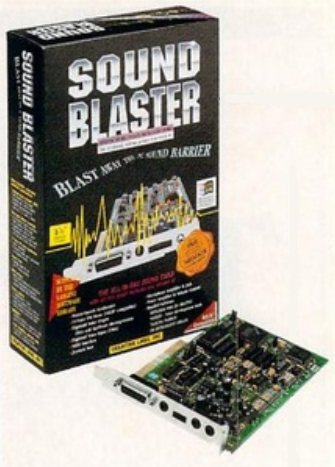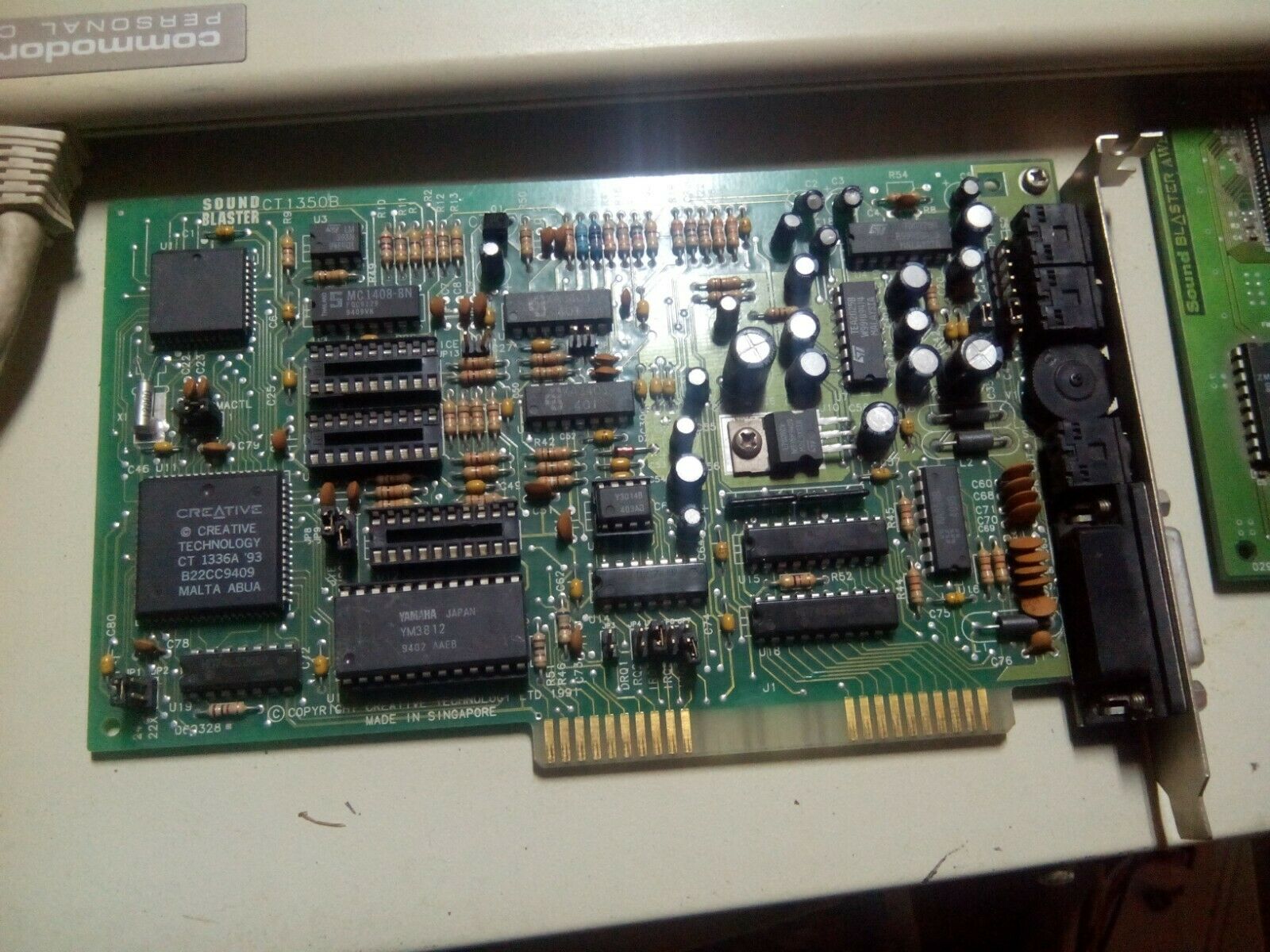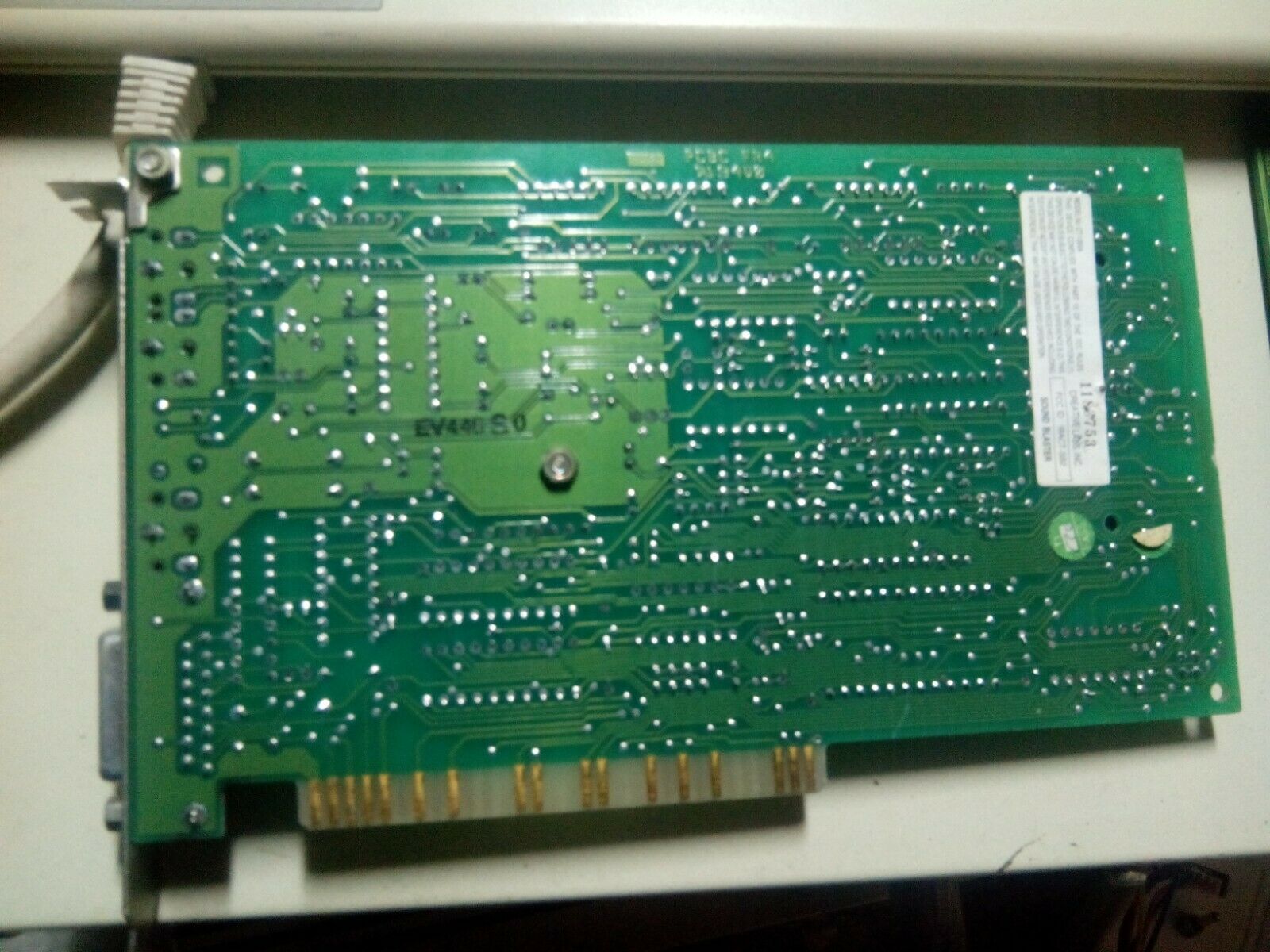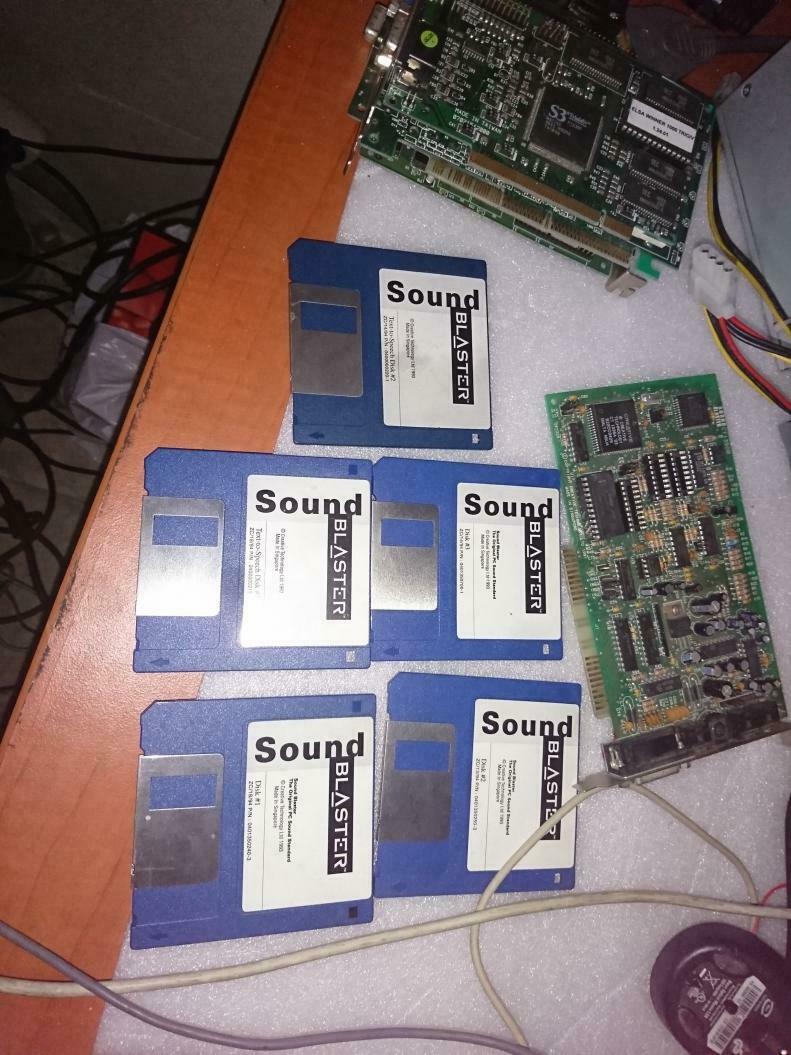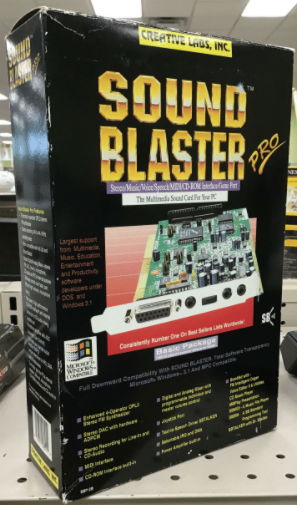Sound Blaster / Sound Blaster Pro
The original Sound Blaster v1.0 and v1.5 (CT1310, CT1320A/B) were released in 1989 as the successor to their Game Blaster. First announced in September 1988, the Sound Blaster had an 11-voice FM synthesizer which made use of the Yamaha YM3812 chip, often referred to simply as the OPL2 chip - this was the same chip used in the Ad Lib card, so it was 100% Ad Lib compatible. This meant that all games which supported Ad Lib would produce similar audio output quality on the Sound Blaster.

Sound Blaster 1.0
But what made it different was the "DSP", or Digital Sound Processor, which is what Creative Labs called the "digital audio" part of the card. This brand new feature brought the ability to play back mono sampled sound at up to 22 kHz sampling frequency (about the same as FM radio quality, so quite poor by today's standards), and record at 12 kHz (which was similar to AM radio quality - even worse). In reality, this transformed DOS games, as this sampled sound was used to introduce sound effects into games while simultaneously playing music via the OPL2 (FM synthesis) chip. For backward compatibility with the earlier C/MS a.k.a. Game Blaster card, the C/MS chips [as they became known] were installed in sockets on the board.
Another key selling feature of the Sound Blaster was its inclusion of a game port. Back in these days, PC owners would need to spend around $50 to buy a game port adapter or a multi-I/O card that had a game port if they wanted to use a joystick with their PC. By adding this feature to the sound card, it freed up an expansion slot and at the very competivie price tag the Sound Blaster was being sold for, it was an easy decision for prospective sound card buyers.
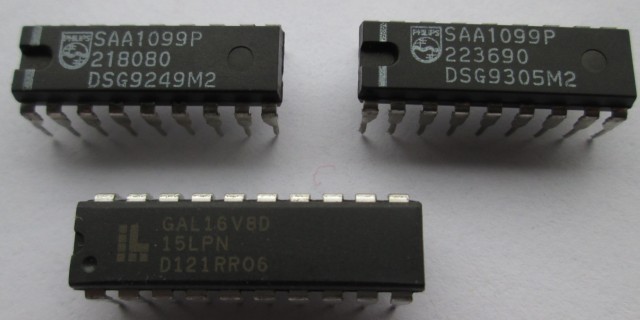 The CT1320B (Sound Blaster 1.5) was a cost-cutting measure. Having recognised that C/MS was unpopular, they replaced the two C/MS (Creative Music System/Game Blaster) chips with sockets - you could still purchase the C/MS chips for $29.95 if you wished and install them into these sockets.
The CT1320B (Sound Blaster 1.5) was a cost-cutting measure. Having recognised that C/MS was unpopular, they replaced the two C/MS (Creative Music System/Game Blaster) chips with sockets - you could still purchase the C/MS chips for $29.95 if you wished and install them into these sockets.
In 1990, the CT1320C and CT1320U were launched which were also a Sound Blaster 1.5. These models dropped the C/MS chips completely, otherwise the card was similar to the Sound Blaster 1.0.
In October 1991, Sound Blaster v2.0 (CT1350) was launched which added support for "auto-init" (automatic initialising) DMA which allowed the card to produce a continuous loop of double-buffered sound output. The sampling rate capabilities were also increased to 44 kHz (CD quality) for playback, and 22 kHz for recording. This new CT1350 used fewer, more tightly integrated components, as hence was a physically shorter card than its predecessors. The changes from v1.5 to v2.0 were all in the DSP chip - this meant that existing owners of prior models could upgrade to a v2.0 card by purchasing the v2.0 DSP chip from Creative.
A Word About Board Revisions
Most Creative Labs boards have their board revision number etched in the bottom-left of the component side of the board.
One member on Vogons reported that Creative Labs' board revisions appear to be pretty logical in their structure. The first two digits represents the major and minor revision of the board, and the last three digits refer to the year (in the 1990s) and week number it was signed off.
For example, the first Sound Blaster Pro 2 (CT2600) board revision is 49219. The second revision is 69237. This means the first was rev 4.9 which was signed off in week 19 of 1992. The second was rev 6.9 which was signed off in week 37 of 1992.
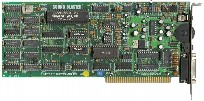 Sound Blaster 1.0/1.5 (CT1310 and CT1320)
Sound Blaster 1.0/1.5 (CT1310 and CT1320)
8-bit mono 22 kHz playback, 13 kHz recording.
CMS chips soldered on board gave backward-compatibility to their Game Blaster.
Yamaha OPL2 FM synthesizer chip.
Game Port.
Plug & Play: No
It was the first sound card on the market to have digital sample playback capability. The CT1310 is not known to actually exist as a model beyond Creative's literature. Its predecessor was the CT1300 which was the CMS/Game Blaster.
The CT1320 is sometimes called "Sound Blaster 1.5". CMS chips were now socketed in order to be more economical for Creative Labs. CMS chips optional. Sound Blaster 1.5 came with DSP version 2.00.
Drivers
Original SB 1.5 driver disks for CT1320C
Original DOS Drivers (15 Aug 1990)
DOS Drivers (2 Aug 1991)
Updated DOS Drivers (27 Jun 1994)
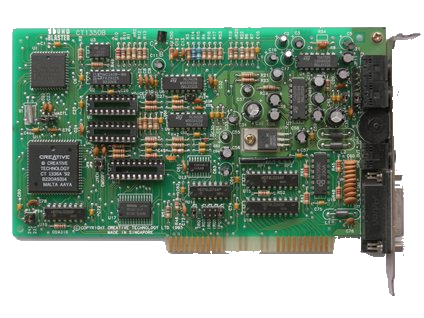 Sound Blaster 2.0 (CT1350)
Sound Blaster 2.0 (CT1350)
Mixer Chip: CT1335
DSP Chip: CT1351
Bus Interface Chip: CT1336A
Known DSP Versions: 2.01, 2.02
Plug & Play: No
Known Revisions: 49151 (QS803), 60328
Known as "Sound Blaster 2.0" or "Sound Blaster Deluxe". Better circuit board layout and dropped another old CMS chip from the board. DMA channel "auto-init" mode allowed the card to play continously without pauses or crackling (something suffered on v1.0 and v1.5 cards). Due to these changes in the DSP programming (now up to version 2.01), some games companies had problems with 100% game compatibility with this card.
The SB2.0 came with a new mixer chip, CT1335. This was the first variant of mixer chip found on Creative cards. It was succeeded by the CT1345 found on the Sound Blaster Pro and the CT1745 found on the Sound Blaster 16. CT1335 provided 8 levels of software volume control for Master, MIDI and CD sources, and 4 level for Voice source. The output mixing path took signals from the Voice, MIDI, CD and PC speaker sources.
Quick Shot licenced the Sound Blaster 2.0 for their own card which they called Sound Machine. It had model number "QS803", and FCC ID HE90S803. See below for pics.
Drivers
CT1350b drivers
Updated DOS Drivers (27 Jun 1994)
Windows 3.1 and DOS Driver updates (27 Jun 1994)
More Images
Quickshot Sound Machine (QS803):
Sound Blaster Pro
Model number CT1330 released in May 1991 was the first Creative card to comply with Microsoft's "MPC" standard. It added a mixer to provide a crude master volume control, high pass and low pass filter. It used a pair of Yamaha YM3812 chips to provide stereo music, although this was rarely used by games. It was fully Sound Blaster and Ad Lib compatible. The Pro also was the first card from Creative Labs to have a CD-ROM interface on-board. Most Pro cards support only the Panasonic (Matsushita/Panasonic) CD-ROM drives. The Pro is still an 8-bit ISA card, as all the previous Sound Blaster cards are, even though at first glance it looks like a 16-bit card because of the 'AT' section on the connector, but note that these are not wired to anything.
v2.0 of the Sound Blaster Pro, the CT1600, got an upgrade from the Yamaha YM3812 (OPL2) chips to a single new Yamaha YMF262 (OPL3), which was backward-compatible with OPL2 and played stereo with 20 voices across 4 FM operators. Also, the Pro's MIDI UART chip was upgraded to full-duplex and offered time-stamping features. At this point, it was still not Roland MPU-401 compatible which was a common standard used by a lot of professional MIDI equipment at the time (more on that later). As before, the CT1600 was fully Sound Blaster-compatible and Ad Lib compatible. A version of the Pro for the IBM PS/2's Micro Channel Architecture was released called the CT5330. There were also two OEM versions of the SB Pro 2.0 called CT1680 and CT1690.
 CT1330
CT1330
Introduced: 1992
FM synthesizer: Two Yamaha YM3812 OPL2 chips (early models) or Single YMF262 (later models)
Mixer Chip: CT1345
DSP Chip: CT1341 (DSP Versions: 3.01)
Bus I/F Chip:
CT1336
CD-ROM Connectors: Panasonic and Mitsumi
Plug & Play: No
The CT1345 mixer chip is the middling variant of mixer chip found on Creative cards. It succeeded the CT1335 found on the Sound Blaster 2.0, and was superceded by the CT1745 found on the Sound Blaster 16. CT1345 was the first stereo mixer for Creative. It provided 8 levels of software volume control on both left and right channels for Master, Voice, MIDI, CD and Line-In sources, and 4 levels for the Microphone output source. The output mixing path took signals from the Voice, MIDI, CD, Microphone and PC speaker sources.
The following games titles support dual-OPL2 (SB Pro) only on a Sound Blaster Pro 1.0:
- Formula One Grand Prix
- F-15 Strike Eagle III
- Hi-Octane (also Pro Audio Spectrum 16)
- Ultima Underworld
Drivers
SoundBlaster Pro Windows 3.1 and DOS Driver Updates for CT-1330 only
For the above set of drivers, If you have not already installed SB Pro drivers into Windows 3.1 and DOS, you must first download and install the drivers from the files SBP2WU.EXE and SBP2DU.EXE.
More Images
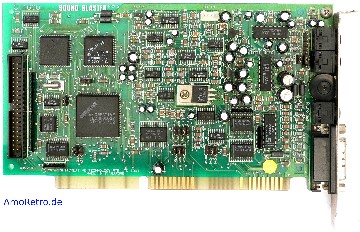 CT1600
CT1600
FM synthesizer: YMF262 (OPL3)
DAC: YAC512.
Mixer Chip: CT1345
DSP Chip: CT1341 (DSP Versions: 3.02)
Bus I/F Chip:
CT1336 (board 49219 and 59234) or CT1336A (board 69237)
CD-ROM Interfaces: Panasonic and Mitsumi
Known Board Revisions:
49219, 59234, 69237, 89414
Plug & Play: No
FCC ID: IBACT-SBP2PS
This is the "Sound Blaster Pro II", introduced in 1991.
A new single OPL3 chip replaces the old dual-OPL2 arrangement. Lower interference than CT1330 (SB Pro '1') due to the new analogue low pass filter. Output quality is quite good, with low noise level, no audible distortion and packs a lot of power in the bass section. Perhaps a bit too bass'y compared to higher quality sound cards. In the mixer settings, the low pass filter is on by default. This can be deactivated with the SBP-SET utilities included in the drivers. This filter is supposed to be applied to digital audio, not FM.
Drivers
SoundBlaster Pro II Windows 3.1 and DOS Driver Updates for CT-1600 / CT-1680 / CT-1690 only
For the above set of drivers, If you have not already installed SB Pro drivers into Windows 3.1 and DOS, you must first download and install the drivers from the files SBP2WU.EXE and SBP2DU.EXE
More Images



.png)
.png)
.png)
Credit to Dusko Marincic for the 3 pics above
of his CT1600 that he recapped.
 CT1680
CT1680
Introduced: 1992
FM synthesizer: YMF262 (OPL3)
DAC: YAC512
Mixer Chip: CT1345
DSP Chip: CT1341 (DSP Versions: 3.01, 3.02)
Bus I/F Chip:
CT1336 (board 39212), CT1336A (board 39313)
Known Board Revisions: 39212 (SB Pro 2 MCV)
, 39313 (standard ISA)
CD-ROM Connectors: Panasonic and Mitsumi
Plug & Play: No
The CT1680 is an OEM version of CT1600, sold to computer manufacturers for integration into their PCs.
 CT1690
CT1690
Introduced: 1992
FM synthesizer: YMF262 (OPL3)
DAC: YAC512
Mixer Chip: CT1345 (board 29304) or CT1345-S (board 69237)
DSP Chip: CT1341 (DSP Versions: 3.01, 3.02)
Bus I/F Chip:
CT1336A (board 29304)
Known Board Revisions: 29304, 69237
Plug & Play: No
The CT1690 is basically a CT1600 but with a Sony CD-ROM interface. The CT1336 chip is the bus interface chip.
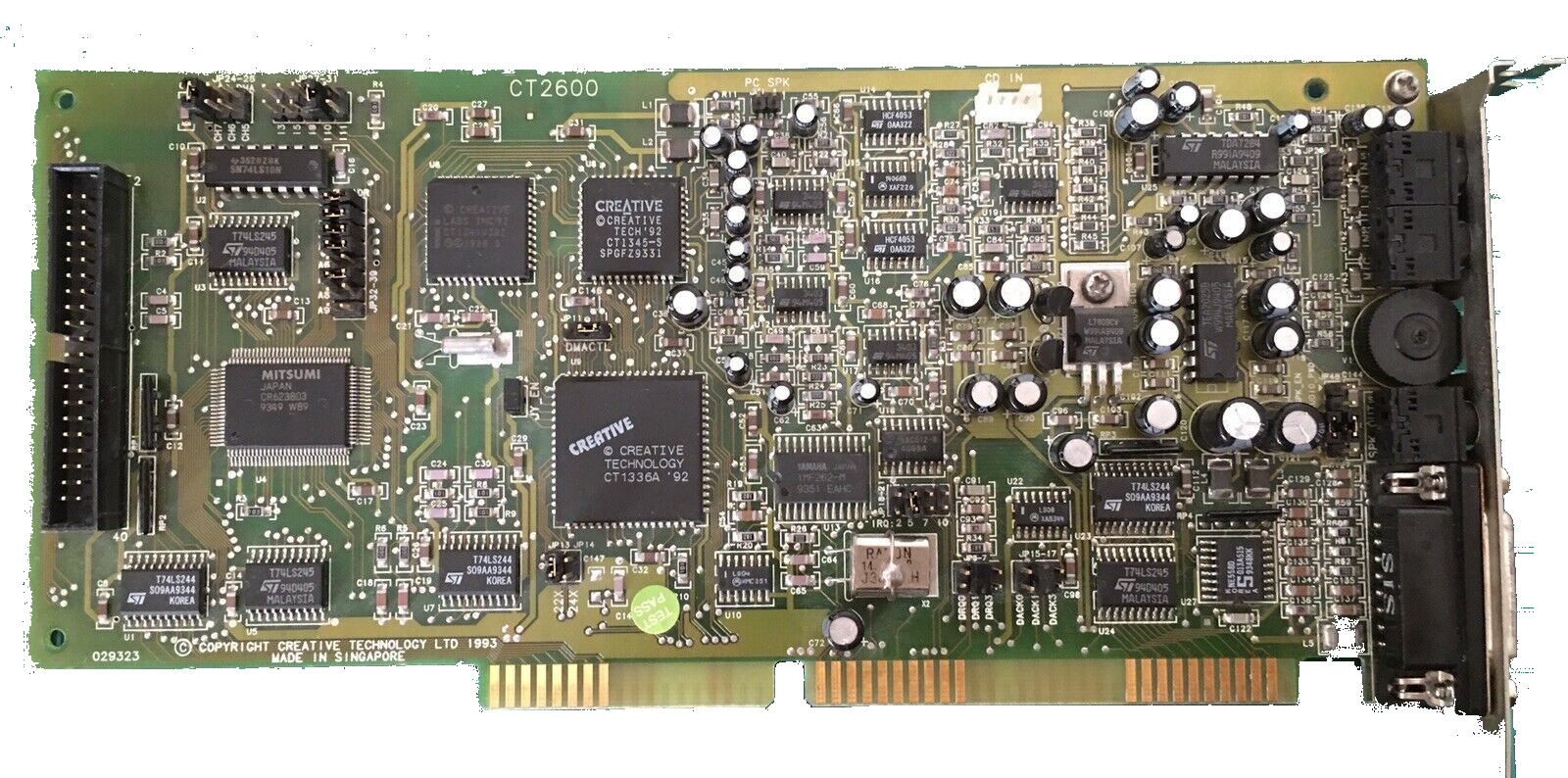 CT2600
CT2600
Introduced: 1992
FM synthesizer: YMF262 (OPL3).
DAC: YAC512.
Mixer Chip: CT1345 (board 19310), CT1345-S (board 29323)
DSP Chip: CT1341 (DSP Versions: 3.02)
Bus I/F Chip:
CT1336A
CD-ROM Interfaces: Mitsumi
Known Board Revisions: 19310, 29323
Plug & Play: No
The CT2600 is very similar to the CT1600, i.e. it's a "Sound Blaster Pro II". It came in two revisions: 19310 and 29323, both released some time during the CT1600's revisions.
The 19310 version got the older mixer chip, CT1345 (no 'S'). The later board revision, 29323, got the new CT1345-S mixer chip.
On the Mitsumi CD-ROM interface side there is also a Mitsumi-branded controller chip.
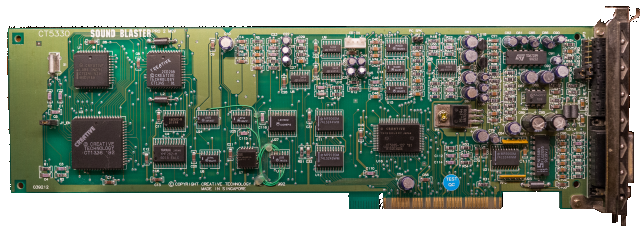 CT5330
CT5330
Introduced: 1992
FM synthesizer: Creative CT1341
DAC: YAC512
Mixer Chip: CT1345
DSP Chip: CT1341 (DSP Versions: 3.02)
Bus I/F Chip:
CT1336
Known Board Revisions: 49229
Plug & Play: No
For IBM PS/2 Model 50 with MCA (Micro-Channel Architecture).
